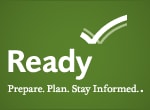Public Health Assessment and Surveillance after a Disaster
NOTE: These forms are not meant to replace normal patient triage and record keeping or routine surveillance reporting mechanisms.
Individuals completing these forms should submit them to the appropriate state or local public health authorities. State or local public health authorities should modify contact information on these forms as needed for reporting within their jurisdiction. CDC is interested in receiving completed forms after they have been submitted to or reviewed by state or local agencies. The information derived through these surveillance efforts will be invaluable for identifying events of public health concern among facilities and across states. It also will assist in directing interventions and other resources to areas of greatest need.
Community Assessment for Public Health Emergency Response (CASPER)
The Division of Environmental Hazards and Health Effects, Health Studies Branch (DEHHE/HSB) at the Centers for Disease Control and Prevention (CDC) has developed the Community Assessment for Public Health Emergency Response (CASPER) toolkit to assist personnel from any local, regional, state, or federal public health departments in conducting the CASPER during disaster. One of the main objectives in developing this toolkit is to standardize the assessment procedures focusing on United States disaster response. The CASPER toolkit provides guidelines on data collection tool development, methodology, sample selection, training, data collection, analysis, and report writing.
Community Assessment for Public Health Emergency Response (CASPER) Toolkit pdf icon[PDF – 23.3 MB] Update – June 7, 2019
Shelter Assessment Tool
CDC has developed an Environmental Health Shelter Assessment Tool to assist environmental health practitioners in conducting a rapid assessment of shelter conditions during emergencies and disasters. The tool is an assessment form that covers 14 general areas of environmental health, ranging from basic food safety and water quality to pet (companion animal) wellness, and allows for the documentation of immediate needs in shelters. It can be easily modified to meet local needs.
Mortality Surveillance
Purpose: Identify the number of deaths related to the disaster and provide basic mortality information.
Setting: Form should be filled out by medical examiners, coroners, hospitals, nursing home, or funeral homes during a disaster. This form does not replace the death certificate.
How to use this form: Use this form for all known deaths related to the disaster. Complete one form per decedent. Send completed forms to designated public health official. EPI INFO databases are available upone request. For further assistance, contact Tesfaye Bayleyegn (770-488-3476, [email protected]).
Download the instructions and definitions:
Morbidity Surveillance
Purpose: Identify the number of deaths related to the disaster and provide basic mortality information.
Purpose: To capture individual-level active surveillance of medical conditions when timely, detailed, patient-level information is needed for response efforts.
Setting: Acute care facilities (e.g., shelters with medical staff, hospitals)
How to use this form: Use the one-page form to record information about the chief complaints and specific infectious syndromes, mental health conditions, injuries, and chronic diseases that best describe the reason the patient is currently seeking care. One form should be filled out per patient. This form also may be filled out by abstracting information from patient records. Please see instructions and definitions in attached word document.
Download the form:
Purpose: This form is an abbreviated version of the Natural Diseaster Morbidity Report Form. Use this form if summary or less-detailed information is sufficient or when the burden of collecting detailed, individual information is substantial.
Setting: Hospitals
How to use this form: One row should be filled out per patient. This form also may be filled out by abstracting information from patient records.
Download the form:
- Excel spreadsheet version excel icon[XLS – 28 KB]
Persons with disabilities having problems accessing the above file may call 1-800-CDC-INFO (1-800-232-4636) for assistance. - PDF version pdf icon[PDF – 31 KB]
Purpose: This form is an abbreviated version of the Natural Disaster Morbidity Report Form. Use this form if summary or less-detailed information is sufficient and a tally sheet is the most useful to capture morbidity data. This form captures morbidity data at the individual level, but does not separate data by individual.
Setting: Shelter facilities
How to use this form: Use one form per facility per reporting period (e.g., 8, 12, 24 hr). Place a tally mark next to each injury/illness that patient reports.
Download the form:
Purpose: To collect aggregate morbidity data. This form should be used for reporting purposes and does not capture individual level data.
Setting: Acute care facilities (e.g., shelters with medical staff, hospitals)
How to use this form: Fill out the form based on individual forms or data from an existing surveillance or reporting system.
Download the form:
For More Help
CDC is available to support local and state mortality surveillance efforts following natural or manmade disasters. For questions and additional information about the disaster-related mortality form, please contact the Division of Environmental Hazard and Health Effects, National Center for Environmental Health, CDC: Amy Wolkin (770-488-3402, [email protected]), Gary Noonan (770-488-3449, [email protected]), Amy Schnall ([email protected]).


